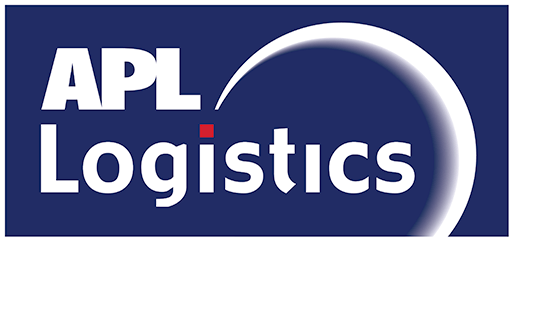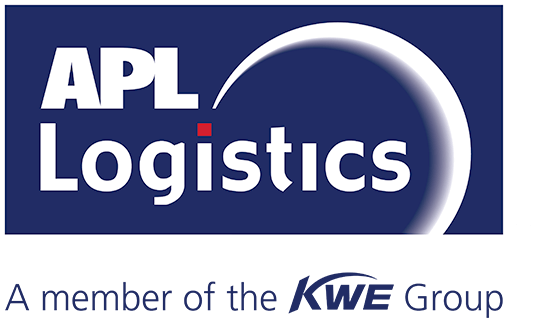October 1, 2025 in Articles
Macro Trends and the Supply Chain: Implications for Logistics
Executive Summary
- Permanent Tariff Environment Reshaping Logistics: Tariffs are now a structural feature of global trade, not a temporary disruption. US tariffs have risen by an average of 21% on imports, and although August 2025 saw some relief, remember that tariffs are not uniformly applied. Supply chain strategies must adapt to this new baseline, abandoning assumptions of full tariff relief and preparing for long-term economic consequences including reduced investment and consumption and higher costs.
- Macroeconomic Instability Driving Strategic Shifts: Slowing global growth, rising inflation, and policy-driven volatility are redefining logistics planning. For example, US goods inflation is rising again, influenced by tariff pass-through, while the Eurozone and China have muted inflation. Traditional forecasting tools are insufficient — leaders must prioritize scenario modeling, regional diversification, and real-time visibility to navigate unpredictable demand and cost structures to account for regional divergence.
- Structural Resilience and Regional Flexibility Are Imperative: Supply chain success now hinges on modular network design, shipment-level cost control, and region-specific contingency planning. Southeast Asia remains a key diversification target, while container shipping faces new volatility from capacity mismatches, rerouting pressures and capacity shocks due to climate, geopolitics, and other factors
The global supply chain landscape is in a time of fundamental transformation. As the second Trump administration reshapes US trade policy, supply chain leaders face a new reality. One where economic volatility isn’t driven only by market cycles, but also deliberate, often sudden, policy shifts. Traditional supply chain strategies, reliant on predictable demand patterns, logistics reliability, and stable trade relationships, need to be rethought.
In this article, APL Logistics examines these macro trends and how they are altering the logistics landscapes, from the permanence of higher tariffs to the decoupling of shipping capacity and cost, and look at how to create supply chain resilience in an era of uncertainty.
We would like to thank Peter Tirschwell, Vice President, Journal of Commerce, S&P Global Market Intelligence, Founder and Chairman of TPM, for the insights and market intelligence he shared at the APL Logistics Global Supply Chain Symposium, Singapore edition on May 15, 2025 and updated in August 2025, which formed the foundation for this analysis.
The Big Picture for Logistics
The key shift is permanent: tariffs will not return to pre-2018 levels. Despite the recent US-China deal1, high tariffs remain the new baseline, creating lasting economic consequences that supply chains acknowledge and must plan around. This continued uncertainty will reduce the appetite for both consumption and investment.
Current forecasts also predicted reduced growth and continued high inflation in 2025, with S&P Global Market Intelligence forecasting weaker quarter-over-quarter real GDP growth rates across most regions during the second half of 2025 and the US economy likely to avoid recession, but face weak jobs data. We have now seen global growth soften in the second half of 2025, diverging higher in the US and more muted in Europe and China. This should rebound in 2026.
This economic downturn isn’t cyclical. It’s the direct result of deliberate trade policy changes. Tariff front-loading boosted quarter 2 and 3, but unwinding will depress this gain going forward. With China’s economy also slowing, and ongoing weakness in industry-sensitive Europe, there are both risks and opportunities:
- Downside risks: Escalating protectionism, tighter financial conditions from inflation and risk-aversion, and debt sustainability concerns driving fiscal tightening
- Potential upside: As permanent trade agreements solidify, policy uncertainty may fade, with possible tax cuts lifting US growth and spillover effects on trade volumes
Supply chain disruption will persist through at least mid-2025, even as supply-demand imbalances lead to greater overcapacity while capacity shocks continue to have the potential to affect containerized supply chains. The critical takeaway? Companies can no longer build their logistics strategies assuming tariff relief as a likely outcome.
Growth Forecast: Widespread Weakness Ahead
S&P Global’s Purchasing Managers’ IndexTM (PMI) data covers around 90% of global GDP, across 40 countries, with the global composite output index serving as an indicator for real GDP growth trends. This index lost ground in the first quarter of the year, even before tariff impacts were fully felt, especially in the previously robust US PMI then improved for 3 consecutive months, ending July, and was primarily driven by service sectors, with manufacturing remaining weak. Hiring has slowed, and confidence may be on a downturn. Similarly, index values for the Eurozone and UK also highlight weak underlying economic conditions.
Global manufacturing and trade indicators have improved since late last year, but some of this may be artificially inflated by pre-emptive front-loading of production and trade in the hopes of bypassing some of the then-looming tariff impacts. Real GDP growth rates may be the weakest seen since the 2008-2009 global financial crisis and the COVID-19 pandemic. Currently, we are looking at 2.6% global growth in 2025, our lowest since the pandemic, but not (yet) a crisis level.
United States
Tariff fallout is slowing the economy, potentially triggering recession. Meanwhile, the Federal Reserve has paused interest rate hikes until December 20252 . So far, this has been successful, as Q2 GDP growth showed a strong 3%, avoiding recession, but the labour market has slowed, with unemployment at 4.2%. The December Federal cut is still anticipated, but we may see it come earlier. While the new budget extends 2017 tax cuts, additional relief was smaller than hoped for, which will leave disposable incomes softer from 2026. Zero-tariff trade is unlikely to return and will be an inevitable brake on growth.
Europe
US tariffs also impact European trade, though Spain may weather it better due to a primarily service-based economy and Germany’s increased defense spending will soften future tariff effects. The ECB continues easing on rates, with deposit rates heading toward 2%3 and likely to hold there, with only the Bank of England pursuing further cuts to 4%4. Eurozone Q2 growth was slightly positive, with the 2025 forecast lifted to 1.2%. Disinflation is also a continued trend, but poor fiscal health remains a risk for several countries. The EU-US trade deal for 15% tariffs across autos and pharma has avoided further US countermeasures.
Asia-Pacific and ASEAN
Asia is a region that thrives on trade, creating a fertile ground for growth. Supply chains are likely to grow, and the region itself is likely to take on greater prominence in global supply chains. However, real GDP growth is expected to stay relatively flat, from the 4.1% of 2024, to around 4.8% 5 this year. They are showing export resilience despite tariffs, with deflation boosting competitiveness.
India and Japan have also faltered amid reciprocal tariffs and weak demand. Japan saw some growth increases, but a slowdown is still expected, with real wages negative and housing soft. Central banks are preemptively easing interest rates to support growth. CPI rates are expected to trend downward, although headwinds remain including: tariffs, mainland China’s economic slowdown, curtailment in global trade volumes, and renewed pressure on local currencies.
For Southeast Asia, domestic demand, front-loading of export orders, rebounding tourism, and a global tech upcycle are powering growth. Front-loading and the semiconductor industry has helped drive stronger results. However, China+1 diversification has extended and complicated supply chains, with China now a competitive force for several ASEAN markets. New tariffs of between 10% and 40% by country are expected to be felt from August.
Inflation Forecast: Rising Pressure
Conversely, consumer price inflation forecasts for 2025 have risen across most major economies, particularly in the Americas. The US sees goods inflation rising, with 1.1% in July, and services remain a main economic driver. China is the exception, where disinflation persists. In Western Europe, weaker demand offsets tariff impacts, creating muted pressures.
Nation-specific differences remain due to factors like labor market tightness and sensitivity to shocks. However, most business surveys, including S&P PMI data are signalling upward pressure for goods pricing, despite supply chain stability to date. This should create higher landed costs in US lanes, but less for the Eurozone and China.
New Volatility for Container Shipping Supply Chains
Drewry forecasts6 that 2025 may mark only the third year on record where container port volumes fall (by ~1%). Other analysts suggest a range from -4% to +5%. However, supply may rise by 6%, leading to a 5% supply/demand disparity.
Traditionally, this would push rates down and create over-capacity, and investment analysts believe this will happen, leading to lower profits or losses for container lines. But paused shipments, rerouted capacity, and new container patterns from tariff announcements led to artificially high tariff-driven pull-forward shipments. Spot rates are now down 70% on the TP eastbound lanes7 according to S&P Global Commodity Insights.
Beyond tariffs, factors like port congestion (especially in Europe) also impact capacity, increasing transit times, reducing reliability, and pushing up costs. Lower oil prices, potentially falling below $60 a barrel8, may offset bunker costs, but showcases weakening demand.
Strategic Implications for Supply Chain Leadership
Overall, the logistics landscape this year is one of macroeconomic instability: shifting trade policies, inflation, and slowing growth. For supply chains, this means:
- Less predictability in demand planning
- Higher landed costs
- More complex long-term investments
To address these challenges:
- Resilience must be structural: Volatility is not temporary. Scenario modeling, alternate routing, and nearshoring/friend-shoring strategies are essential.
- Visibility and flexibility are vital: Real-time data on shipment status, compliance, and costs is critical. Delays increase risk and cost.
- Regional diversification hedges risk: Southeast Asia, though slowing, remains an attractive expansion area. Diversification can help offset broader uncertainty.
Putting it Together: Four Realities Facing Supply Chain Leaders
- Tariffs are permanent, but uneven: Supply chain strategy should no longer be built on the idea of tariff relief as a likely outcome. They should plan per region or trade lane.
- Unpredictability is policy: Traditional forecasting tools, built on historical demand, are insufficient. Planners need to re-weight policy as a primary input in demand forecasting, even over consumer sentiment, as it may become the primary driver of logistics costing and demand.
- Risk protection is needed: Companies that diversify regionally without building region-specific risk hedges, such as secondary routing or in-region warehousing, may find themselves trading one vulnerability for another.
- Capacity and cost no longer track: Supply availability no longer aligns with cost, confirmed by collapsing freight rates despite tighter availability in certain lanes. Routing flexibility is now a necessity, not just an operational detail.
It’s time to break away from “normal” expectations, as coming years are unlikely to return to established equilibriums. Scale alone will not solve this. Supply chain leaders must adopt modular network design, shipment-level cost visibility, and region-specific contingency planning. Markets can no longer be treated as interchangeable.
Adaptability, diversification, and informed, responsive planning will define success.
In short: Under the macro trend of permanent uncertainty, leaders must recalibrate their supply chains to operate successfully. Including by finding partners equipped to help support their goals. With operations in 110 locations over 60 countries, APL Logistics balances global scale with local expertise. APL Logistics provides supply chain leaders with industry-specific and sustainable services, along with a wealth of digital tools to ensure full control, visibility, and flexibility. All of which means that even while uncertainty is the rule, you can rely on APL Logistics to be your consistent partner in a new era of logistics.
References
1 https://www.reuters.com/world/china/us-china-trade-talks-resume-second-day-2025-06-10/
2 https://www.thestreet.com/fed/fed-official-revamps-interest-rate-cut-forecast-for-2025
3 https://www.ecb.europa.eu/press/pr/date/2025/html/ecb.mp250306~d4340800b3.en.html
4 https://www.bankofengland.co.uk/monetary-policy-summary-and-minutes/2025/august-2025
5 https://english.sse.com.cn/news/newsrelease/voice/c/c_20250730_10787057.shtml
6 https://www.drewry.co.uk/maritime-research-products/maritime-research-products/container-market-annual-review-and-forecast-202425
7 https://scarbroughglobal.com/rates-continue-to-fall-for-tp-eastbound-cargo/
8 https://www.eia.gov/pressroom/releases/press573.php


